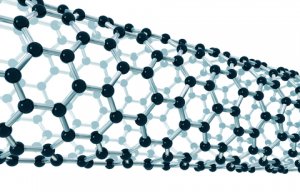
Growing uses for biocomposites
Biocomposites are gaining in importance, according to Dipl.-Phys. Michael Carus, the Managing Director of the nova-Institut, who looked at the industry’s future.

2nd July 2014
Innovation in Textiles
|
Stuttgart
 Materials made from wood flour, cotton, flax, jute or even hemp are already being deployed as compression moulding components, especially by the automotive industry – with other trades increasingly following suit.
Materials made from wood flour, cotton, flax, jute or even hemp are already being deployed as compression moulding components, especially by the automotive industry – with other trades increasingly following suit.
Biocomposites are steadily gaining in importance for the future of the manufacturing sector, and Composites Europe 2014 conference is set to present the full potential of these bio-based composite materials when it takes place in Stuttgart from 7 to 9 October.
“The event marks the first time bio-based composites will be highlighted as a special theme in connection with the nova-Institut,” said Dipl.-Phys. Michael Carus, the Managing Director of the nova-Institut. “Numerous key players from the bio-based industry have already booked their spots for 7 – 9 October.”
The nova-Institut from Hürth, Germany, will also be exhibiting at the trade fair. For over two decades, the private and independent research institute has been active in areas such as raw-material supply analysis, techno-economic evaluation and market research.
Michael Carus commented: “In 2012, about 100 companies in the EU produced more than 350,000 tonnes of wood- and natural-fibres reinforced biocomposites. The majority of these products were extruded into decking using wood flour and wood fibres.”

“Natural fibres are deployed primarily for use as compression-moulding parts in car interiors. In 2012, 90,000 tonnes of these natural fibre composites (NFC) were used by automobile manufacturers across Europe. The combined share of WPC and NFC biocomposites has already reached 15% of the total composites market.”
In a recent study , the nova-Institut laid out a number of different scenarios for the future unfolding of the biocomposites landscape. Michael Carus explained: “A favourable political and economic framework has been creating clear forward momentum, particularly for injection and compression moulding, which will replace significant amounts of conventional composite materials. This would greatly reduce greenhouse gas emissions.”
At Composites Europe, the institute will participate in a group stand focussed on bio-based composites while offering project development and consultation services in areas such as bio-based materials, techno-economic evaluation and eco balancing.
The industry’s leading enterprises to exhibit in the conference’s biocomposites segment include the Belgian companies Amacell Benelux, BASALTEX NV and Beologic. The Swiss firm Bcomp, the European Industrial Hemp Association based in Hürth, the Dresden non-profit Forum Technologie und Wirtschaft e.V. and the Gütersloh weaving mill Güth & Wolf will present their solutions in this area.
The roster also includes ISOWOOD from Rudolstadt and Jakob Winter from Nauheim. Displays will focus primarily on materials based on wood and natural fibres such as flax and hemp. The Brensbach company BIOWERT will present materials containing meadow grass.
On show will be natural-fibre needle felt nonwovens for compression moulding parts as well as a variety of product solutions made from natural fibre compression moulding parts – specialty cases, for example – and technical foams and insulation materials.

Business intelligence for the fibre, textiles and apparel industries: technologies, innovations, markets, investments, trade policy, sourcing, strategy...
Find out more